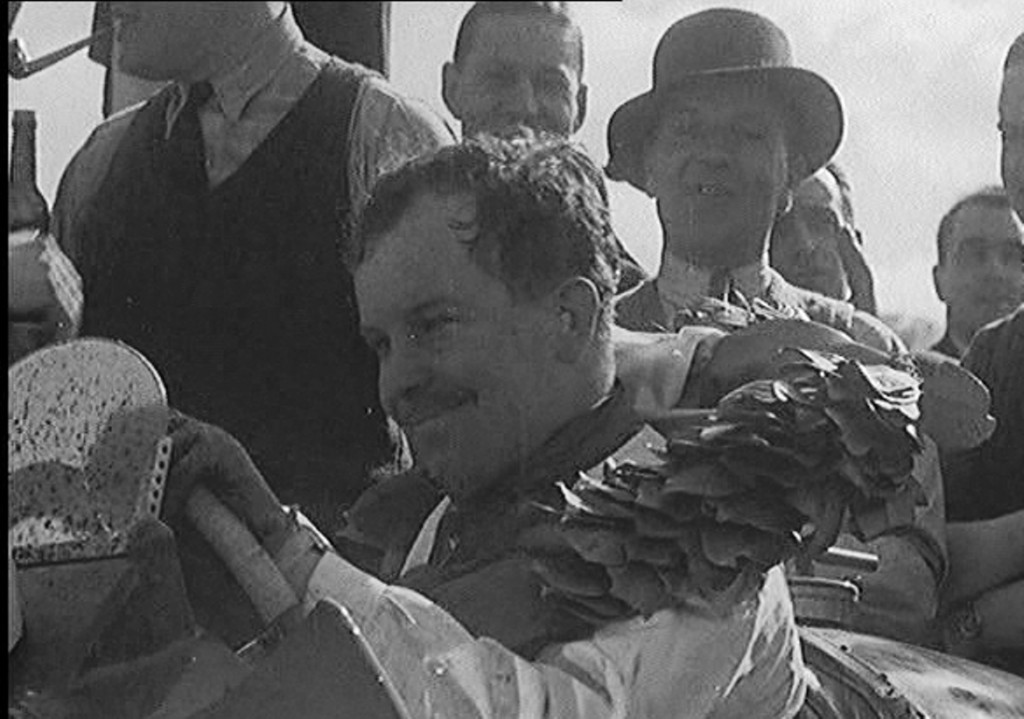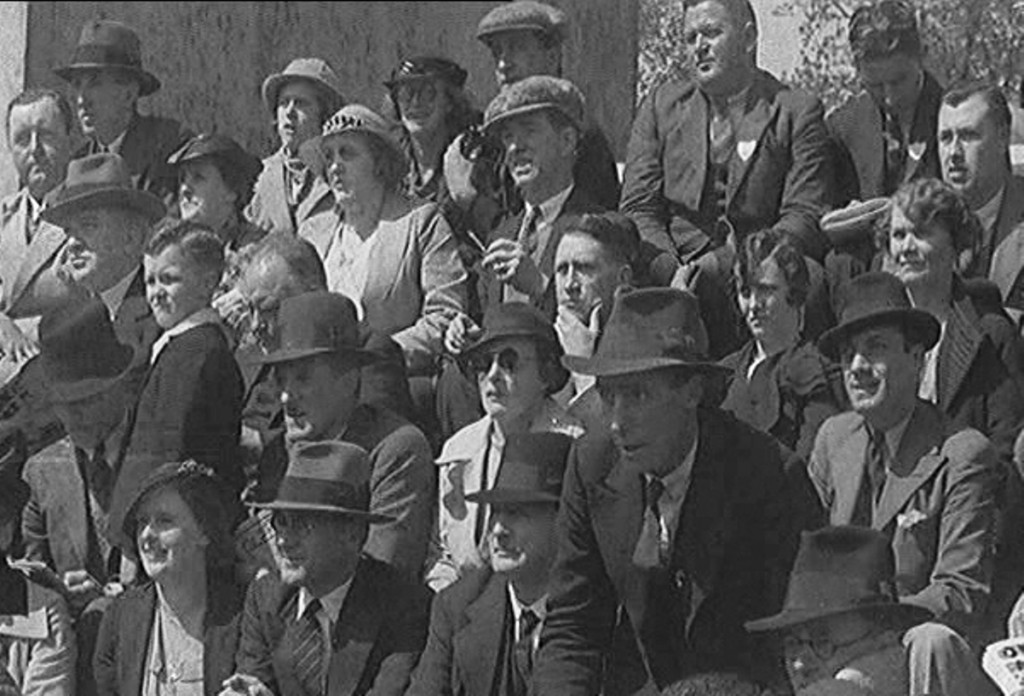
Kieran’s Our City, Our Town Article,
Cork Independent, 31 March 2011
In the Footsteps of St. Finbarre (Part 253)
Landscapes of Dare-Devilry
The 1936 Cork Motor Races was a very positive project for Cork and as a spectacle the event was deemed a great success. Exploring the newspaper coverage in local and national press at the time reveals a project that was well supported locally and brought many people from around Ireland and Britain (to the extent that hotel accommodation became booked out).
On Saturday 16 May 1936, the race day, the entire 6 ¼ miles of the course was crowed on both sides while all the vantage points held crowds six or seven deep. This is shown in the British Pathé short film of the event, http://www.britishpathe.com/record.php?id=6844. In this there are various shots of cars starting the race in groups, multiple shots of the race and the crowds of people watching from walls of houses and front gardens along the race route.
The entry list was by far one of the most attractive that has ever been secured for an Irish race, embracing as it did the names of many world famous drivers. The complete entry list was as follows. Representing the Irish Free State were F.H. Ffrench-Davis (Dublin), P.M. Dwyer (Cahir), D.C. MacLaughlan (Cork), G.H.W. Manders (Dublin), F. O’Boyle (Dublin), T.C. O’Shaughnessy (Dublin), J. Toohey (Dublin) and D. Yule (Dublin).
From Northern Ireland were L.R. Briggs (Whiteabbey), J. Carr (Belfast), H.W. Furey (Bangor), C.G. O’Neil (Belfast) and W. Sullivan (Belfast). Representing the United Kingdom were B. Bira (London and Prince of Siam), D.L. Briault (Pinner), C. Meryvn White (Bucks), G.F.A. Manby-Congrave (London), A. Dobson (Surrey), Sir A. MacRobert (Caherham), C.E.C. Martin (Surrey), I.O.F. Peters (Bristol), A. Powys-Fyffe (Bradfield), E.K. Rayson (London), R.E. Tongue (Manchester), The Duke of Grafton (London) and E.W.H. Dobson (Scotney). There was also one other whose name is not recorded. Out of the entry list all but three commenced the race.
The Irish Press in their press coverage (18 May 1936, p.12) noted that the course did not prove as fast as anticipated. Speeds of up to 130m.p.h were attained in the two mile Carrigrohane Straight Road but the back stretch, with its curving and undulating nature, was a severe test for cars and drivers. There was the Victoria Cross semi hairpin, the Poulavone hairpin, the wide right angled Dennehy’s Cross and the wide ‘s’ at the Gravel Pit bend, where the steep descent to a left hand turn called for as the Irish Press noted “extreme caution or dare devilry”.
Reginald Ellis Tongue of Manchester won the race in an English Racing Automobile or E.R.A. at an average speed of 85.53 m.p.h. in 2 hours, 12 minutes and 22 seconds. The E.R.A. was created in late 1933 by wealthy motor-racing enthusiast Humphrey Cook, successful racing driver Raymond Mays and designer Peter Berthon. The aim was to build British prestige abroad. The cars were to have purpose-built chassis using 1100 and 1500cc (and later 2-litre) engines based on a Riley block, modified to take a supercharger. E.R.A. was, arguably, the first small scale manufacturer of production racing cars in the UK.
For Reggie Tongue, it was the first time he succeeded in attaining first place. The highest place he got in the Free State had been third in the Phoenix Park races in 1931. Since that year to the Cork race, he had built up much experience in Europe. In the Cork race of 1936, his skill and luck prevailed as he had a trouble free run all the way. His car was ideally geared for the course and in clashes with rivals at any of the bends he always came out “seconds to the good”. He was, with one exception, fastest around Victoria Cross, Dennehy’s Cross and the Gravel Pits. His only main rival was B. Bira, the Prince of Siam. He had only started racing in 1935 and won the Prince Rainier Cup race at Monaco and the International Trophy race. After a couple of laps it was obvious that Bira and Tongue, barring accidents, would fight out the finish. They kept overtaking and getting away from those behind them. With ten laps to go, a broken fuel pipe brought an end to the Prince’s hope. Fifteen minutes later, he arrived on foot at the pits.
The winner and Prince Bira of Siam set such a hot pace from the start that only eight of the 24 starters finished in the time limit. Mechanical defects were responsible for practically all the retirements. The course proved its reputation for safety, there being only one accident with no serious consequences. On the back stretch C. Mervyn-White, when cornering at Inchigaggin at high speed, hit the fence, and his car turned a complete double broadside somersault, landing on its wheels before hitting the wall on the opposite side of the road. He recovered control, and with a damaged axle and injuries to his head and hand, drove back to the pits.
The winner’s margin over A. Powys-Lyybbe, who was second, was 3 minutes, 23 seconds. The first three finishers were English men and five of the eight starters who finished within the time limit were also visitors. The Saorstát entrants claimed the same proportion, three of its six starters completing the course.
To be continued…
Captions:
584a. Reginald Ellis Tongue winning the Cork Motor Race, 1936 (source: still from British Pathé)
584b. Crowd scene, Cork Motor Race, 1936 (source still from British Pathé)
